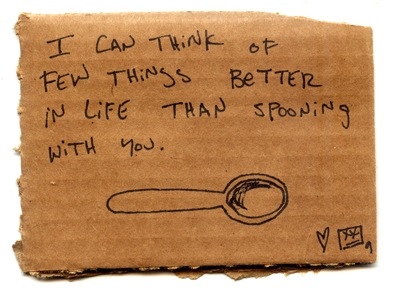This is an inflammatory subject. If you don’t agree with what I’ve said here, that’s just fine. Just don’t get in my face about it. Reasoned debate doesn’t come from flinging insults. Be civil, inform others of how you feel, and take on board what they have to say too.
I’m an animal lover. When I was little, that love was for horses, although I was brutally allergic to them and would sneeze whenever one was close, I’d always take any offer to go up to the stables and look after a family friends’ horse. Now, I’m a dog lover. I can’t wait to have one of my own. I love nature documentaries, seeing monkeys happily swinging from tree to tree, and the animals on the forest floor foraging.
Reading that, you’d think someone like me would be completely against animal testing. I’m not, I’m actually pretty supportive of animal testing for medical purposes. Testing cosmetics on animals is plain wrong, it’s not necessary.
Animal testing has been something discussed at length in so many ways. The debate thread on the forum has come back to some semblance of activity, and I feel as if I’m the only one debating from the medical advancement viewpoint instead of “oh, those poor animals!”.

Animal,Porkey Pig, Lobund-Wistar (Photo credit: Wikipedia)
I will make my apologies now, this post will be far longer than most of my usual posts, and it will be dry. If you stick with me from this point, I thank you. You’ll get a little phrase near the end to comment me with, and I’ll jump around with glee that someone’s finished my blog!
I’m a biological sciences student at a university in Scotland. In my first and second years, we did some experiments involving animals – the first experiment we did was a live dissection of a mussel, so we could see how its breathing apparatus works. Prior to starting the experiment, the director gave the option for anyone opposed to this sort of experiment to leave (with no detriment to their grade) and then proceded to give us a lecture about how to treat this animal with respect, and that we absolutely must avoid hurting it more than was necessary for this lesson. Prior to beginning any courses which contain working with animals at the university, you must sign a welfare form, saying that you will adhere to all rules laid out by the university. All demonstrators (postgrad students who knew what they were doing) watched over us like hawks, making sure we did not insert the scalpel far enough to touch the mussel when opening the shell gave us their time to show what proper practice when dealing with any animal is.
Worldwide, animal testing is broadly participated in, simply because in-vitro testing is not financially viable for underfunded scientific facilities to practice. Scientists who use animals in their testing though, adhere to the “Three R’s”:
The three Rs are a set of principles that scientists are encouraged to follow in order to reduce the impact of research on animals. The three Rs are: Reduction, Refinement, Replacement.
The three Rs are a set of principles that scientists are encouraged to follow in order to reduce the impact of research on animals.
The three Rs are: Reduction, Refinement, Replacement.
Reduction:
Reducing the number of animals used in experiments by:
Improving experimental techniques
Improving techniques of data analysis
Sharing information with other researchers
Refinement:
Refining the experiment or the way the animals are cared for so as to reduce their suffering by:
Using less invasive techniques
Better medical care
Better living conditions
Replacement:
Replacing experiments on animals with alternative techniques such as:
Experimenting on cell cultures instead of whole animals
Using computer models
Studying human volunteers
Using epidemiological studies
(Source)
The 3 R’s are posted here to show that research using animals is only conducted when necessary, and minimises suffering in all ways possible. Scientists don’t just randomly think to themselves that they’re going to use and hurt as many animals as possible.
In the USA, the IACUC gives very clear guidelines as to how experiments should be carried out, such as linked here at Cornell university, here at Harvard, and here at Penn State university.
In Canada, the Canadian Council on Animal Care (CCAC) is setup to act in the interests of the people of Canada to ensure through programs of education, assessment and guidelines development that the use of animals, where necessary, for research, teaching and testing employs optimal physical and psychological care according to acceptable scientific standards, and to promote an increased level of knowledge, awareness and sensitivity to relevant ethical principles. At the inaugural meeting on January 30, 1968, the CCAC adopted the following statement of objective: “to develop guiding principles for the care of experimental animals in Canada, and to work for their effective application”.
The provinces have jurisdiction concerning that area. The federal government, however, is involved in three areas: the criminal law power, the health power, and the spending power.
The Criminal Code of Canada Section 446 and 447 of the Criminal Code protect animals from cruelty, abuse and neglect. This section of the Criminal Code has been under review for several years.
The Health of Animals Act (1990) and its regulations are aimed primarily at protecting Canadian livestock from a variety of infectious diseases that would threaten both the health of the animals and people, and Canadian trade in livestock with other countries. This act is used both to deal with named disease outbreaks in Canada, and to prevent the entry of unacceptable diseases that do not exist in Canada.
Spending power – the other mechanism through which the federal government has lent its support to the humane treatment of animals is not strictly speaking legislative in nature, but in many respects it is one of the most powerful instruments available to the federal government for setting national standards. The federal government’s power to provide for grants subject to conditions imposed on the recipients, be they provincial governments or individual or corporate recipients, may take a variety of different forms. One form is that of the conditional federal grant or contract. This manifestation of the federal power is what currently underpins the imposition of CCAC standards on facilities receiving funding from the Canadian Institutes of Health Research and the Natural Sciences and Engineering Research Council. Where the government itself awards a contract on an academic or non-academic institution, clause A9015C of Public Works Standard Acquisition Clauses and Conditions Manual imposes conditions related to the care and use of experimental animals in public works and government services. All of the provinces in Canada have created and passed laws that pertain to animal welfare, but only certain provinces have made their own laws. Universities in Canada also follow strict guidelines, as shown here from the University of Toronto.
Arguably the UK has the most strict laws and guidelines concerning animal testing. As all testing is governed by the Home Office, they publish data as well as the institutions involved (statistics from 2004 here).
Here’s a section of a piece written by Jess Smith and Aisling Spain who both perform animal testing at the University of Edinburgh:
The pressure on researchers to use alternatives is not adequately understood among the public and this is exploited by animal rights groups in their arguments. In condemning the use of animals in research, they make the point that animals are too dissimilar to humans for meaningful comparisons to be made. However, when making points about animal use for food PETA are quick to draw specious parallels between humans and animals. Despite high-profile failures in drug safety, there still exists a vast number of drugs on the market which have had their safety established in animals. Public perception of animal rights issues is further distorted by celebrity endorsements of certain issues, such as protests against the fur trade.
In common with other emotive science issues the most problematic issue for those defending animal research is public ignorance of the research itself and how it is controlled. This ignorance is compounded by some animal rights websites which inaccurately represent scientists as unwilling to use alternatives to animals in their research. It is time to end the silence on the part of researchers, to explain to the public what is done and why, and to open up laboratories and animal facilities so that their level of care can be clearly seen.
The Animals (Scientific Procedures) Act 1986 link here requires experiments to be regulated by three licenses: a project license for the scientist in charge of the project, which details the numbers and types of animals to be used, the experiments to be performed, and the purpose of them; a certificate for the institution to ensure it has adequate facilities and staff; and a personal license for each scientist or technician who carries out any procedure. In deciding whether to grant a license, the Home Office refers to the Act’s cost-benefit analysis, which is defined as “the likely adverse effects on the animals concerned against the benefit likely to accrue as a result of the programme to be specified in the license” (Section 5(4)). A license should not be granted if there is a “reasonably practicable method not entailing the use of protected animals” (Section 5(5) (a)). The experiments must use “the minimum number of animals, involve animals with the lowest degree of neurophysiological sensitivity, cause the least pain, suffering, distress, or lasting harm, and [be the] most likely to produce satisfactory results” (Section 5(5) (b)). source here
During a 2002 House of Lords select committee inquiry into animal testing in the UK, witnesses stated that the UK has the tightest regulatory system in the world, and is the only country to require a cost-benefit assessment of every license application (source) There are 29 qualified inspectors covering 230 establishments, which are visited on average 11–12 times a year.source here
If you’ve made it to here – post “parsimonious” so I know you made it to here and I can squee that I haven’t killed everyone with boredom. Animal testing has brought about so much advancement in medicine, it’s truly been amazing. People have called it an archaeic practice, but how else are you supposed to test medicines? How many human test subjects are really going to volunteer? How reliable do you think the results would be from a very tiny sample size?
Until in-vitro testing is more affordable, animal testing will continue. It’s a sad fact, but there you have it. From my experience of both helping out in an animal shelter and being around animals who are being tested on – people outside of labs are far worse than the people who are trying to keep you, your friends and your family healthy.
A short list of things animal testing has helped provide treatment and cures for









 ollection of cool images I found whilst searching random terms online, be it fashion, retro or even just searching for colours. It’s not for everyone. I don’t have many followers at all (given I’m celebrating having a sum total of 33 followers on here, which twitter aside is my most-followed online profile), and I don’t really interact with anyone unless it’s to reblog something cool they’ve posted.
ollection of cool images I found whilst searching random terms online, be it fashion, retro or even just searching for colours. It’s not for everyone. I don’t have many followers at all (given I’m celebrating having a sum total of 33 followers on here, which twitter aside is my most-followed online profile), and I don’t really interact with anyone unless it’s to reblog something cool they’ve posted.
 which I posted a gif of Kemboi dancing after finishing his 3,000m steeplechase.
which I posted a gif of Kemboi dancing after finishing his 3,000m steeplechase.



